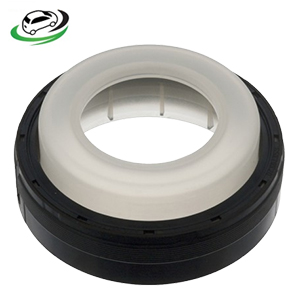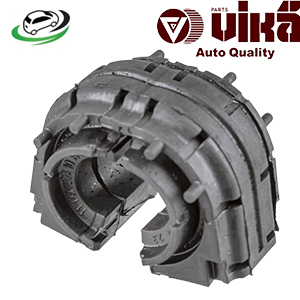-11%
Get Rear Crankshaft Oil Seal BMW N20/N52/N55 Engines 11117587168
The crankshaft oil seal is a vital component within an internal combustion engine, responsible for maintaining the integrity of the lubrication system by preventing oil from leaking out where the crankshaft exits the engine block. This seal, also known as the main seal, comes in two forms: the front crankshaft seal and the rear crankshaft seal. Both types are designed to handle the intense conditions within the engine, ensuring that oil remains inside the engine while contaminants like dirt and debris are kept out.
Importance of the Crankshaft Oil Seal
The primary function of the crankshaft oil seal is to retain engine oil, which is essential for lubricating various moving parts within the engine, such as the crankshaft, connecting rods, and bearings. Without proper lubrication, these components would experience excessive friction, leading to rapid wear and potentially catastrophic engine failure. Therefore, the crankshaft oil seal plays a crucial role in maintaining the engine’s longevity and performance.
Oil leaks caused by a faulty crankshaft seal can have several negative consequences. Not only can they result in a loss of oil pressure, but they can also cause the engine to overheat, lead to contamination of other engine components, and create a mess under the hood. In severe cases, a significant loss of oil could lead to engine seizure, where the moving parts inside the engine grind to a halt due to a lack of lubrication.
Construction and Materials
Crankshaft oil seals are typically made from durable materials designed to withstand the harsh conditions within the engine. The most common materials used in these seals are:
- Rubber: Traditional crankshaft seals are made from nitrile rubber (NBR), which is valued for its flexibility and resistance to oil, heat, and wear. This material is suitable for most standard engines.
- Silicone: Silicone seals are often used in high-performance engines or those operating in extreme temperatures. Silicone offers excellent heat resistance and maintains its flexibility even at low temperatures.
- PTFE (Teflon): PTFE seals are known for their low friction and high durability. They are often used in modern engines due to their ability to withstand high rotational speeds and extreme temperatures without deteriorating.
The seal itself usually features a lip design, where the inner lip fits snugly against the crankshaft. This lip is often reinforced with a spring, known as a garter spring, which helps maintain the pressure against the crankshaft, ensuring a tight seal even as the crankshaft rotates.
Types of Crankshaft Oil Seals
There are two primary types of crankshaft oil seals, each serving a specific purpose based on their location in the engine:
- Front Crankshaft Seal: This seal is located at the front of the engine, near the timing cover. It prevents oil from leaking out of the front end of the crankshaft, where the crankshaft pulley or timing gear is located.
- Rear Crankshaft Seal: Positioned at the rear of the engine, this seal prevents oil from leaking where the crankshaft connects to the transmission. Rear crankshaft seals are generally larger and more difficult to replace due to their location behind the engine.
Common Causes of Crankshaft Oil Seal Failure
Crankshaft oil seals are subject to wear and tear over time, which can lead to failure. Some of the most common causes of seal failure include:
- Aging and Wear: Over time, the rubber or other materials in the seal can degrade, losing their elasticity and becoming brittle. This degradation can cause the seal to crack or shrink, leading to leaks.
- Improper Installation: If the seal is not installed correctly, it can become misaligned or damaged, resulting in an improper seal against the crankshaft. This misalignment can cause oil to leak past the seal.
- Crankshaft Surface Damage: If the crankshaft surface where the seal sits becomes damaged or worn, the seal may not be able to maintain a tight fit, leading to oil leaks. Such damage can occur from debris, corrosion, or improper installation of previous seals.
- Excessive Pressure: The engine’s crankcase ventilation system is designed to relieve pressure within the engine. If this system becomes clogged or fails, excessive pressure can build up, forcing oil past the seal.
- Exposure to Heat and Chemicals: The high temperatures and chemical exposure inside the engine can cause the seal material to break down over time, leading to hardening, cracking, or swelling.
Symptoms of a Failing Crankshaft Oil Seal
Identifying a failing crankshaft oil seal early can prevent more severe engine damage. Some common symptoms of a failing seal include:
- Oil Leaks: The most obvious sign is oil leaking from the front or rear of the engine. You may notice oil spots under your vehicle or oil coating engine components near the seal.
- Low Oil Levels: If your engine oil level drops consistently without visible leaks elsewhere, it could indicate a leak at the crankshaft seal.
- Oil on the Flywheel or Clutch: For rear crankshaft seal failures, oil can leak onto the flywheel or clutch, causing slippage, noise, or clutch problems.
- Burning Oil Smell: Leaking oil that comes into contact with hot engine parts can produce a distinct burning oil smell, noticeable inside or outside the vehicle.
Consequences of Ignoring a Failing Crankshaft Oil Seal
Ignoring a failing crankshaft oil seal can lead to significant engine damage. The most immediate consequence is a loss of engine oil, which can result in inadequate lubrication of engine components. This lack of lubrication can cause increased friction, leading to overheating, accelerated wear, and ultimately, engine failure.
Additionally, oil leaks can damage other components. For example, if oil from a leaking rear crankshaft seal contaminates the clutch, it can cause the clutch to slip or fail, requiring costly repairs. Similarly, oil leaking from the front crankshaft seal can damage the timing belt or chain, potentially leading to timing issues or engine misfires.
Replacing the Crankshaft Oil Seal
Replacing a crankshaft oil seal is a complex and labor-intensive task that often requires specialized tools and knowledge. The process varies depending on whether the front or rear seal is being replaced, but generally involves the following steps:
- Access the Seal: This typically requires removing several engine components, such as the timing cover, crankshaft pulley, flywheel, or transmission, to access the seal.
- Remove the Old Seal: The old seal is carefully removed using a seal puller or similar tool, taking care not to damage the crankshaft or seal housing.
- Inspect the Crankshaft: The crankshaft surface where the seal sits is inspected for damage or wear. If necessary, a repair sleeve can be installed to provide a smooth surface for the new seal.
- Install the New Seal: The new seal is carefully pressed into place, ensuring it is seated evenly and securely.
- Reassemble the Engine: The engine components are reassembled in the reverse order of removal, and all bolts are torqued to the manufacturer’s specifications.
- Test for Leaks: After reassembly, the engine is started and checked for any leaks. The oil level is also monitored to ensure the seal is functioning properly.
Follow us on Facebook for more parts.



